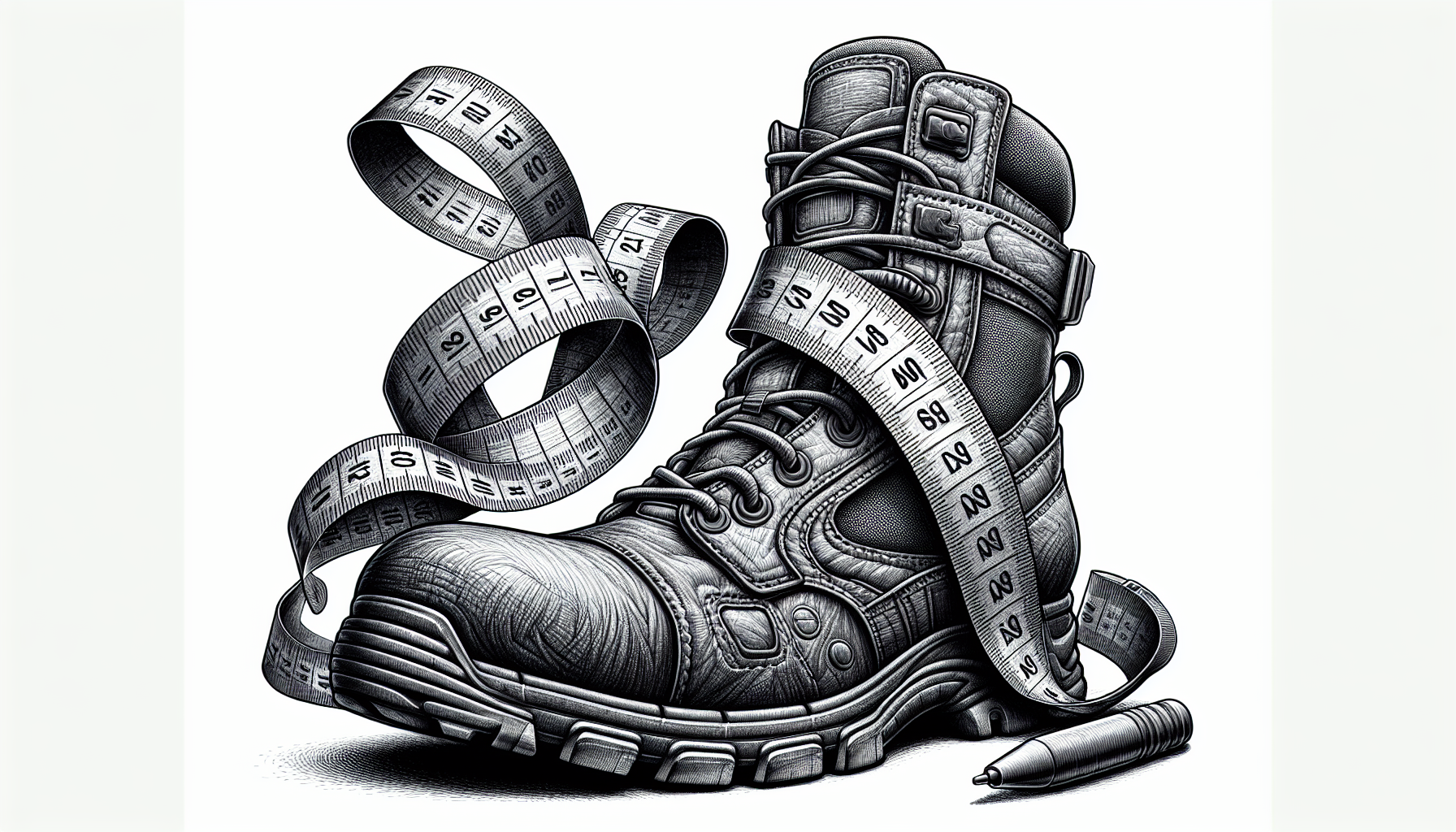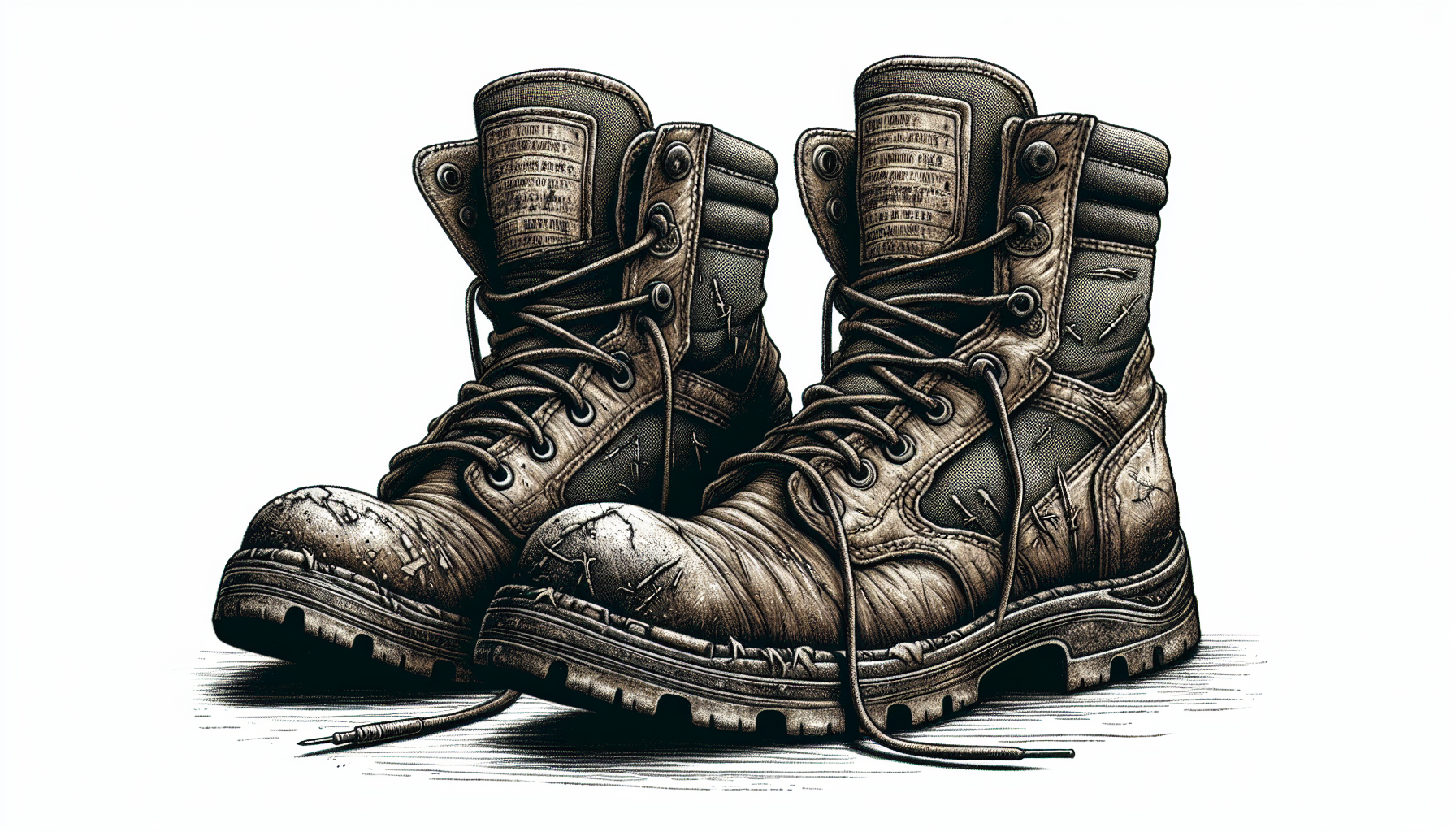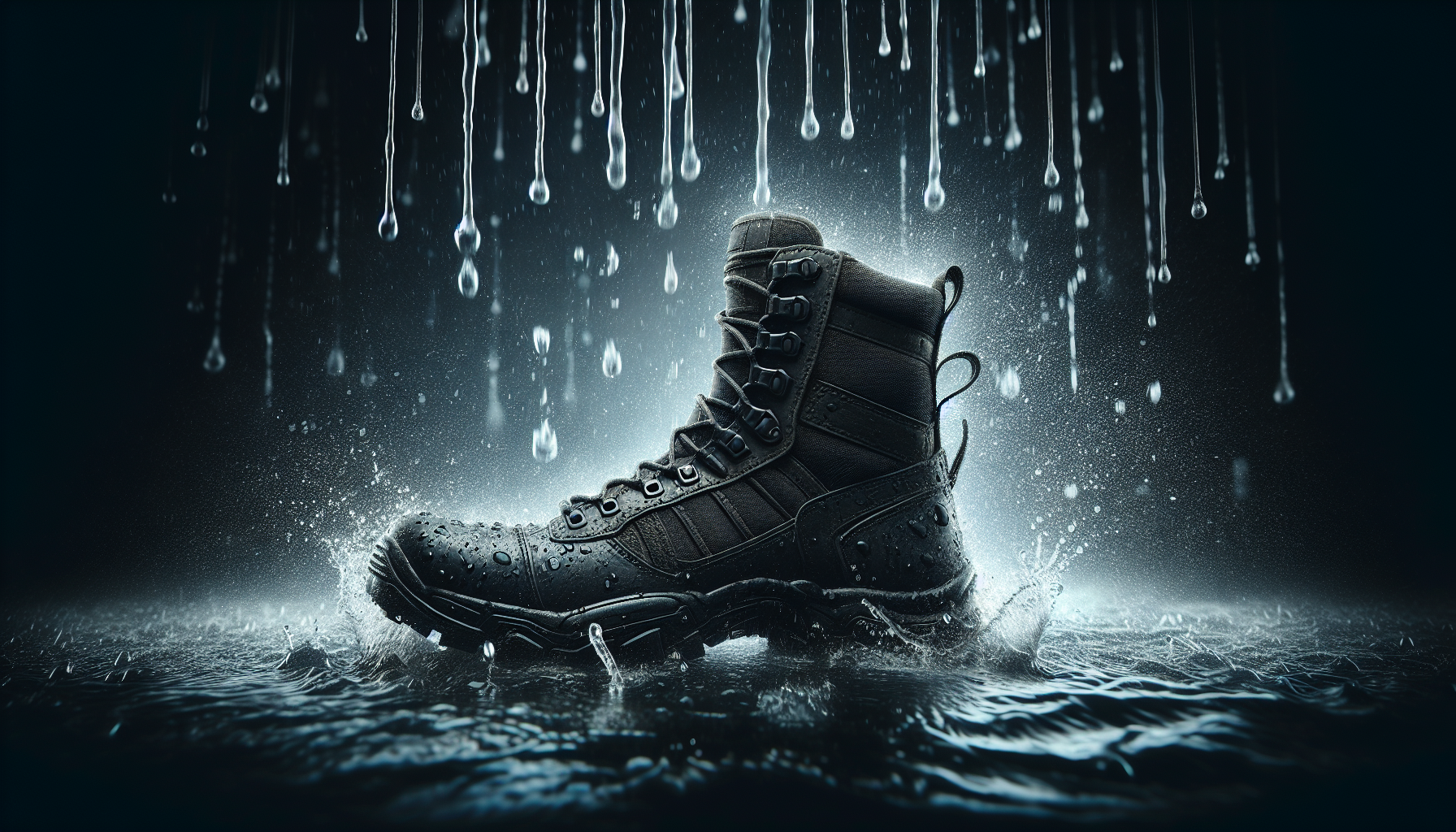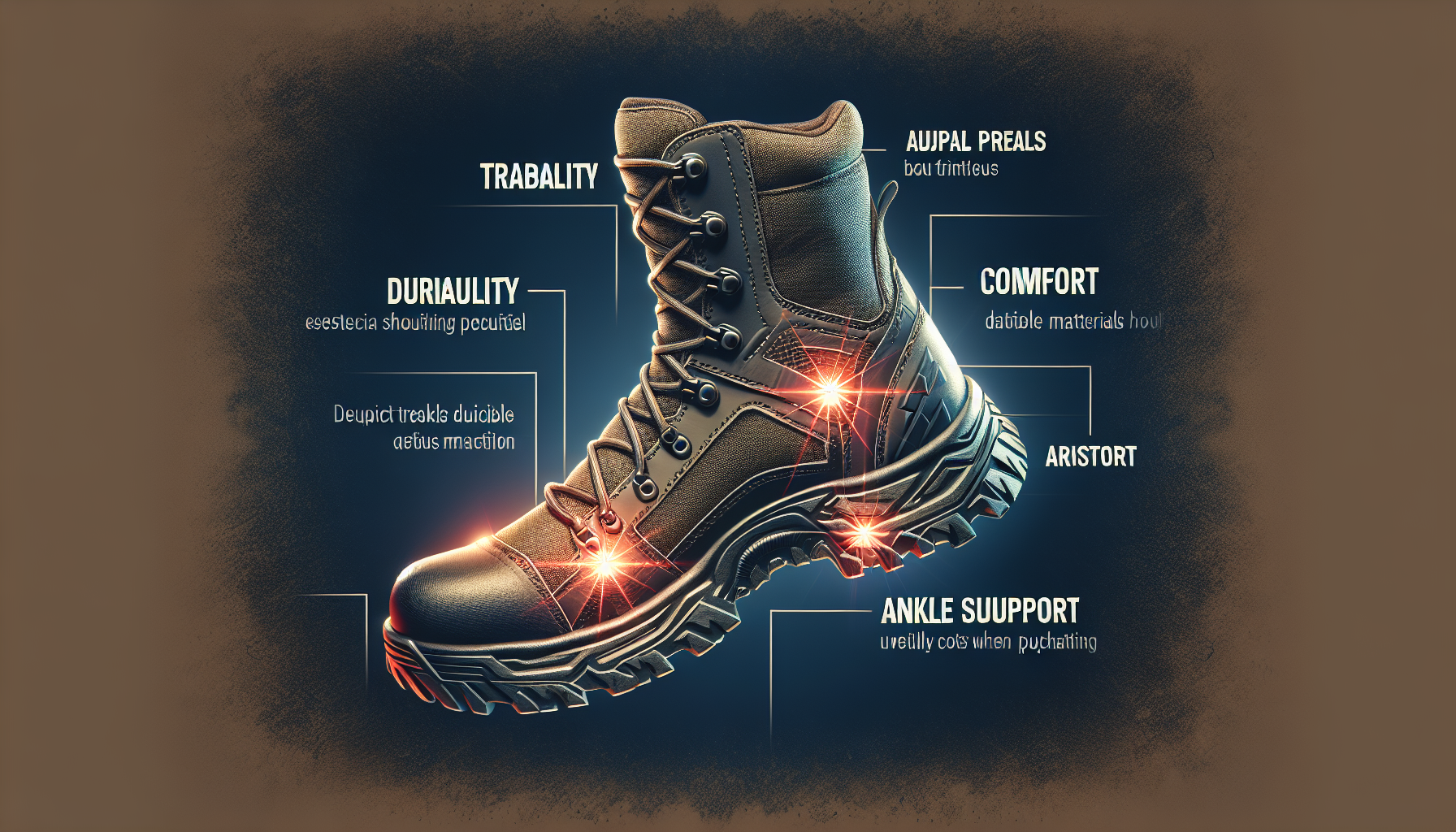Essential Tips For Choosing The Right Size Of Tactical Boots
Choosing The Right Size Of Tactical Boots
Are you in the market for a reliable pair of tactical boots that not only provide optimal performance but also fit like a dream? Look no further! In this article, we will share with you some essential tips to help you choose the right size tactical boots. Find out how to ensure a perfect fit that guarantees comfort and functionality, making your every step feel like a breeze. So, get ready to take on any mission or adventure with boots that are tailored to your feet!
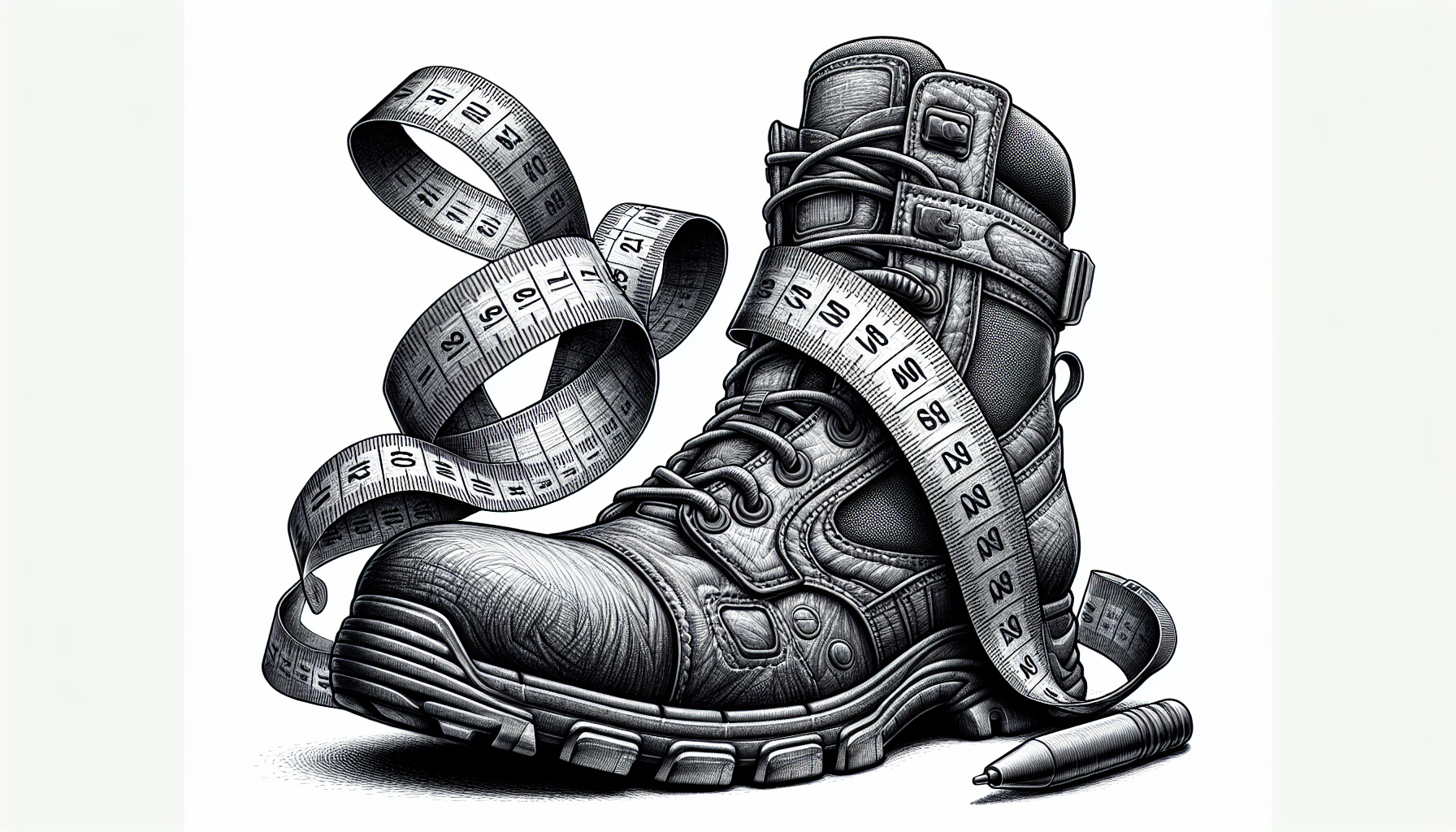
1. Understanding the Importance of Proper Fit in Choosing The Right Size Of Tactical Boots
1.1 Why Proper Fit is Crucial for Tactical Boots
When it comes to tactical boots, proper fit is absolutely crucial. The right size and fit can greatly impact your comfort, performance, and overall foot health. Tactical boots are designed to withstand challenging environments and provide optimal support and protection for your feet. However, if they don’t fit well, they can lead to a range of foot problems and discomfort.
1.2 How Ill-Fitting Tactical Boots Can Lead to Foot Problems
Wearing ill-fitting tactical boots can have a negative impact on your feet. One of the most common problems caused by improper fit is blisters. If your boots are too tight or rub against certain areas of your feet, friction can occur, leading to painful blisters. Additionally, wearing boots that are too narrow or too wide can cause discomfort, foot fatigue, and even foot deformities over time.
1.3 The Benefits of Wearing the Right Size Tactical Boots
On the other hand, wearing the right size tactical boots can provide numerous benefits. First and foremost, proper fit ensures optimal comfort. When your boots fit well, you’ll be able to move freely and perform tasks without any discomfort. Additionally, correctly fitting boots provide better stability and support, reducing the risk of ankle twists or sprains. Furthermore, wearing the right size boots can also enhance your overall foot health by preventing the development of conditions such as bunions or hammertoes.
2. Measuring Your Foot Size
2.1 Choosing the Right Time to Measure Your Foot
Before purchasing tactical boots, it’s essential to have accurate measurements of your foot size. However, it’s important to choose the right time of day to measure your feet. Feet tend to swell throughout the day, so it’s recommended to measure them in the afternoon or evening, when they’re at their largest. This will ensure that you choose the size that accommodates for any swelling that may occur during usage.
2.2 Tools and Techniques for Accurate Foot Measurement
To measure your foot size accurately, you’ll need some basic tools. A ruler or measuring tape and a piece of paper are sufficient for measuring the length and width of your feet. Start by placing the piece of paper against a wall, then stand on it with your heel touching the wall. Mark the tip of your longest toe on the paper, and measure the distance between the wall and the mark. Repeat this process for the width of your foot by measuring the widest part. These measurements will give you a good starting point for determining your boot size.
2.3 Tips for Measuring the Length and Width of Your Feet
When measuring the length and width of your feet, there are a few key tips to keep in mind. Firstly, ensure that you’re wearing the type of socks you plan on wearing with your tactical boots during the measurement process. This will ensure that the measurements are accurate and provide an appropriate fit. Additionally, it’s important to measure both feet, as many people have slightly different sizes on each foot. Always choose the size that accommodates the larger foot.
3. Considering Your Foot Type and Shape
3.1 Understanding Different Foot Types
Before diving into the specifics of boot fit, it’s essential to understand the different foot types and how they may affect your choice of tactical boots. The three main foot types are flat feet, neutral feet, and high arches. Flat feet have little to no arch, while neutral feet have a moderate arch, and high arches have a prominent arch. Knowing your foot type will help you find boots that offer the necessary support and stability for your specific foot shape.
3.2 How Foot Shape Affects Boot Fit
Depending on your foot shape, certain types of boots may be more suitable than others. For those with flat feet, boots with good arch support are crucial to provide stability and prevent overpronation. Neutral feet usually have the easiest time finding comfortable boots, as they can accommodate a wide range of styles. On the other hand, individuals with high arches may benefit from boots that offer extra cushioning and a deeper heel cup to provide proper support and prevent excessive pressure on the arches.
3.3 Common Foot Issues and the Right Boots for Them
Different foot issues require different types of boots for optimal comfort and support. For individuals with bunions, boots with a wide toe box and soft, flexible material are recommended to prevent irritation. Those suffering from plantar fasciitis should opt for boots with excellent arch support and shock absorption to alleviate pain. Individuals with conditions such as flat feet or overpronation may benefit from motion control boots that provide stability and prevent excessive inward rolling of the foot.
4. Sizing Differences in Tactical Boots
4.1 Variation in Sizing Standards Among Brands
It’s important to note that sizing standards may vary among different brands of tactical boots. What may be a size 9 in one brand could differ slightly from another brand’s size 9. Therefore, relying solely on your typical shoe size may not yield the best fit when it comes to tactical boots. Understanding this variation will help you make more informed decisions when selecting your boot size.
4.2 Manufacturer-Specific Sizing Charts and Guidelines
To ensure you choose the correct size, most reputable tactical boot manufacturers provide sizing charts and guidelines specific to their brand. These charts often include measurements of foot length and width, as well as corresponding boot sizes. Take the time to refer to these charts and follow the manufacturer’s guidelines to find the most accurate size for your feet.
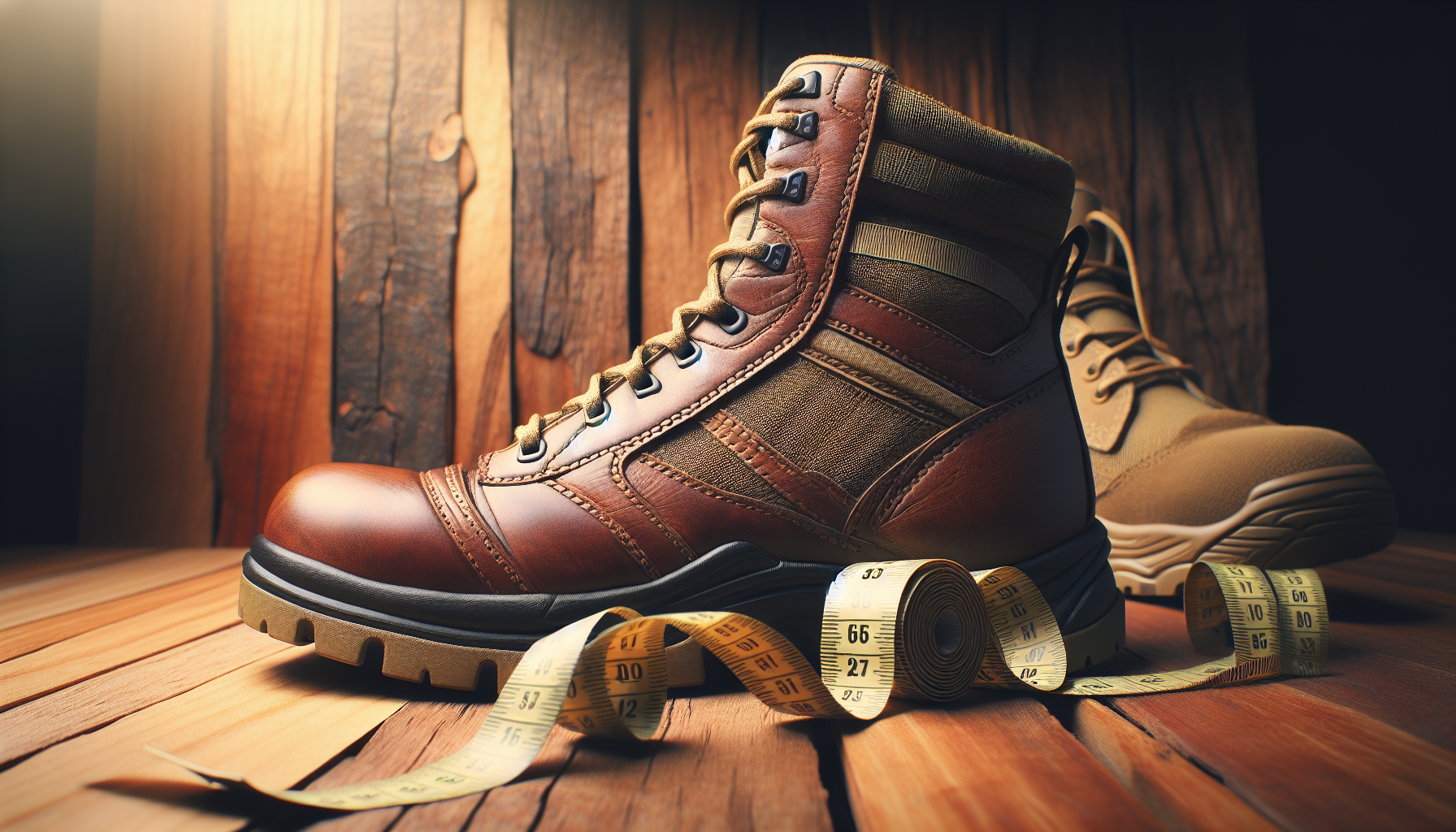
5. Determining the Right Size for You
5.1 Using Foot Measurements to Find the Perfect Fit
Now that you have your foot measurements and an understanding of your foot type, it’s time to determine the right size for you. Start by referring to the manufacturer’s sizing chart. Match your foot measurements to the corresponding boot size on the chart. If your measurements fall between sizes, it’s generally recommended to size up to ensure you have enough room for comfort and socks. However, keep in mind that different manufacturers might have slight variations, so it’s always a good idea to read reviews or seek guidance from others who have experience with the brand.
5.2 Interpreting Manufacturer’s Size Charts and Recommendations
Manufacturer’s size charts can provide valuable guidance when selecting the right size for your tactical boots. Take note of any additional recommendations provided by the manufacturer, such as sizing down for a snug fit or sizing up for wider feet. These recommendations are often based on customer feedback and can help you make more informed decisions regarding your boot size.
5.3 Considering Factors That May Affect Boot Fit
While foot measurements and manufacturer’s size recommendations are essential, there are additional factors that can affect boot fit. For example, if you plan on wearing thick or padded socks, you may need to adjust your boot size accordingly. Similarly, if you have any specific foot conditions or require custom orthotics, you may need to choose a size that can accommodate these additional factors. It’s important to consider these variables to ensure the best possible fit for your feet.
6. Importance of Trying on Tactical Boots
6.1 The Benefits of Trying on Boots Before Buying
While accurate measurements and manufacturer’s guidelines are helpful, it’s always recommended to try on tactical boots before making a purchase. Trying on boots allows you to gauge the actual fit and feel of the boots on your feet. By physically trying them on, you can ensure that they provide the level of comfort and support you require for your specific activities.
6.2 What to Look for When Trying on Tactical Boots
When trying on tactical boots, pay attention to several key factors. First, check for any pressure points or areas that feel too tight. Your boots should snugly hug your feet without causing any discomfort or pain. Additionally, ensure that there is enough room in the toe box to allow for natural movement of your toes. Lastly, walk around in the boots to assess stability and to determine if there is any rubbing or friction that could cause blisters.
6.3 Common Mistakes to Avoid During Boot Fitting
When trying on boots, it’s important to avoid common fitting mistakes that can impact the accuracy of your assessment. One common mistake is failing to walk around and test the boots for an extended period. Boots that initially feel comfortable may cause discomfort after prolonged wear. Additionally, make sure you are wearing the socks you plan to wear with the boots to accurately gauge the fit. Lastly, don’t be afraid to try different sizes or styles to find the perfect fit for your needs.
7. Understanding Break-In Period
7.1 What is a Break-In Period for Tactical Boots
Tactical boots, like many other types of footwear, often require a break-in period before they become fully comfortable. The break-in period refers to the time it takes for the boots to mold to the shape of your feet and for the materials to soften and flex with your movements. During this period, it’s normal to experience some discomfort or stiffness.
7.2 How the Break-In Period Affects Boot Fit
The break-in period can have an impact on the overall fit of your tactical boots. As the materials stretch and conform to your feet, the boots may feel slightly looser than when you initially purchased them. It’s important to keep this in mind when selecting the size. If the boots feel snug during the initial fitting, they may provide the perfect fit once broken in. Similarly, if the boots feel slightly loose, they may become more comfortable after the break-in period.
7.3 Tips for Managing the Break-In Process
To effectively manage the break-in process, take your time and gradually increase the duration of wear. Start by wearing the boots for short periods indoors before venturing outside. This will allow your feet and the boots to adjust gradually. Additionally, consider using techniques such as wearing thicker socks during the break-in period to provide additional padding and minimize discomfort. It’s important to listen to your body and take breaks if you experience excessive pain or discomfort during the break-in period.
8. Considering Sock Thickness and Materials
8.1 Impact of Socks on Boot Fit and Comfort
Socks play a crucial role in boot fit and overall comfort. The thickness and material of your socks can significantly impact how the boots feel on your feet. Thick socks provide additional cushioning and may require slightly more room in the boots, whereas thin socks allow for a tighter fit. It’s important to consider the type of socks you plan to wear with your boots when determining the appropriate size.
8.2 Choosing the Right Sock Thickness and Material for Your Boots
When choosing socks for your tactical boots, consider the climate and activities you’ll be engaging in. In colder weather or for added cushioning, thicker socks may be more suitable. On the other hand, in hot weather or for activities that require breathability, thinner socks made of moisture-wicking materials, such as merino wool or synthetic blends, may be more appropriate. It’s important to choose socks that provide the right balance of comfort, moisture management, and temperature regulation for your specific needs.
9. Seeking Expert Advice
9.1 Consulting with Footwear Professionals
If you still have uncertainties about finding the right size or fit, don’t hesitate to seek advice from footwear professionals. Visit a reputable shoe store or outdoor gear retailer and consult with the staff who specialize in tactical boots. They can provide valuable insights, recommend specific brands or models based on your needs, and assist in finding the perfect fit for your feet. Their expertise can save you time and ensure you make an informed decision.
9.2 Getting Recommendations from Experienced Users
In addition to seeking advice from professionals, reaching out to experienced users can also be beneficial. Online forums or communities dedicated to tactical gear can provide a wealth of knowledge and insights from individuals who have already tried and tested various brands and models of tactical boots. They can offer personal experiences, tips, and recommendations based on their own usage and foot shape. This firsthand information can be extremely valuable in guiding your decision-making process.
10. Taking Care of Your Tactical Boots
10.1 Proper Cleaning and Maintenance
Once you’ve found the perfect pair of tactical boots, it’s important to take care of them to ensure their longevity. Regular cleaning and maintenance not only keep your boots looking good but also prolong their lifespan. Follow the manufacturer’s instructions for cleaning, which typically involve gentle brushing and wiping with a damp cloth. Avoid harsh chemicals or excessive water exposure, as these can damage the materials.
10.2 Storage and Protection Tips for Prolonged Boot Lifespan
When not in use, proper storage is essential to protect your tactical boots. Store them in a cool, dry place away from direct sunlight. Stuffing the boots with newspaper or boot trees can help maintain their shape. Additionally, consider investing in protective products, such as waterproof sprays or leather conditioners, to enhance water resistance and prevent cracking or drying of the materials. By taking these simple steps, you can maximize the lifespan of your tactical boots and continue to enjoy their benefits for years to come.
In conclusion, choosing the right size tactical boots is essential for your comfort, performance, and foot health. By understanding the importance of proper fit, measuring your foot size accurately, considering your foot type and shape, and taking into account factors such as sock thickness and materials, you can make an informed decision when selecting your boots. Remember to try on the boots, understand the break-in period, and seek expert advice when necessary. With the right size and fit, you’ll be ready to tackle any challenge with confidence and comfort. And don’t forget to take care of your tactical boots through proper cleaning, maintenance, and storage to ensure their longevity.

